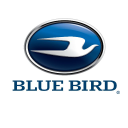/ factorpad.com / stocks / f62wtm.html
An ad-free and cookie-free website.
Our quantitative data points are meant to provide a high-level understanding of factors in equity risk models for Blue Bird Corp. Portfolio managers use these models to forecast risk, optimize portfolios and review performance.
We show how BLBD stock compares to 2,000+ US-based stocks, and to peers in the Manufacturing sector and Heavy Duty Truck Manufacturing industry.
Please do not consider this data as investment advice. Data is downloaded from sources we deem reliable, but errors may occur.
 Blue Bird is the leading independent designer and manufacturer of school buses, with more than 570,000 buses sold since its formation in 1927 and approximately 180,000 buses in operation today. Blue Bird's longevity and reputation in the school bus industry have made it an iconic American brand. Blue Bird distinguishes itself from its principal competitors by its singular focus on the design, engineering, manufacture and sale of school buses and related parts. As the only manufacturer of chassis and body production specifically designed for school bus applications, Blue Bird is recognized as an industry leader for school bus innovation, safety, product quality/reliability/durability, operating costs and drivability. In addition, Blue Bird is the market leader in alternative fuel applications with its propane-powered and compressed natural gas-powered school buses. Blue Bird manufactures school buses at two facilities in Fort Valley, Georgia. Its Micro Bird joint venture operates a manufacturing facility in Drummondville, Quebec, Canada. Service and after-market parts are distributed from Blue Bird's parts distribution center located in Delaware, Ohio.
Blue Bird is the leading independent designer and manufacturer of school buses, with more than 570,000 buses sold since its formation in 1927 and approximately 180,000 buses in operation today. Blue Bird's longevity and reputation in the school bus industry have made it an iconic American brand. Blue Bird distinguishes itself from its principal competitors by its singular focus on the design, engineering, manufacture and sale of school buses and related parts. As the only manufacturer of chassis and body production specifically designed for school bus applications, Blue Bird is recognized as an industry leader for school bus innovation, safety, product quality/reliability/durability, operating costs and drivability. In addition, Blue Bird is the market leader in alternative fuel applications with its propane-powered and compressed natural gas-powered school buses. Blue Bird manufactures school buses at two facilities in Fort Valley, Georgia. Its Micro Bird joint venture operates a manufacturing facility in Drummondville, Quebec, Canada. Service and after-market parts are distributed from Blue Bird's parts distribution center located in Delaware, Ohio.
Many of the following risk metrics are standardized and transformed into quantitative factors in institutional-level risk models.
Rankings below represent percentiles from 1 to 100, with 1 being the lowest rating of risk.
Stocks with higher beta exhibit higher sensitivity to the ups and downs in the market. (↑↑)
Stocks with higher market capitalization often have lower risk. (↑↓)
Higher average daily dollar volume over the past 30 days implies lower liquidity risk. (↑↓)
Higher price momentum stocks, aka recent winners, equate to lower risk for many investors. (↑↓)
Style risk factors often include measures of profitability and payout levels.
Companies with higher earnings generally provide lower risk. (↑↓)
Companies with higher dividend yields, if sustaintable, are perceived to have lower risk. (↑↓)
/ factorpad.com / stocks / f62wtm.html
A newly-updated free resource. Connect and refer a friend today.